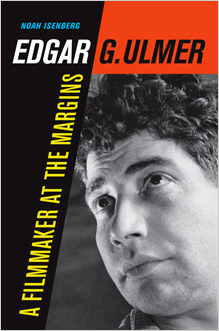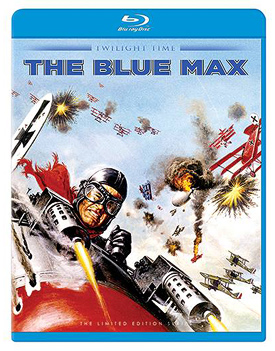Here’s a great story about the former head of Cox in
So I wasn’t in Dave’s office when the secretary or whoever came dashing in, a for sure look of astonishment on his or her face when he or she told him that indeed, and I’m sure he or she double checked, Robert Redford himself was on the phone with a personal plea to keep the channel alive and kicking in Oklahoma’s capital city.
According to news reports at the time Bialis said he told Redford “this is no different than any business decision that any business goes through... where you have to make calls as to what to include and what not to include.”
That’s what Dave said he said. I know a little more.
Here’s sort of what Dave really imparted.
“OK,
Next thing I know, we’re planning a party for Mr. River Runs Through It, Mr. Ordinary People, Mr. Up Close and Personal.
I don’t remember at that time what part my friend Gray Frederickson played in these particular shenanigans – he had, at that time, just moved back to Oklahoma City after being in Hollywood for four decades and winning a “Best Picture” Academy Award for producing The Godfather, Part II, but I’m sure he was consulted at some point and he I and went together. Gray has a strong connection with Redford, having produced the then relatively unknown actor in a pre Butch Cassidy movie called Little Fauss and Big Halsey, in 1968.
The rest of the story is rather anti-climactic, after having a week to put the event together; there was Bob Woodward, Johnny Hooker and Waldo Pepper himself, just as glorious and magnificent as one would think. He gave all the gawkers a friendly smile and handshake, doing a Q&A after a remarkable speech regarding artistic expression and left us all in a swoon. Gray and I got a private audience and I mentioned that I was particularly fond of Quiz Show, a movie that now seems somewhat forgotten. He then told me that was his favorite film he’d done.
 I made notes of the evening and two aspects of Redford’s speech stand out.
I made notes of the evening and two aspects of Redford’s speech stand out.
On the importance of keeping his Sundance Channel on the air in places such as
“And as the major film business moves more and more toward young people and special-effects, action-blockbuster films – which is fine – it’s going to be at the expense of films that adults would really enjoy seeing. More experimental films, more diverse films, which is where independent film comes in.”
Wow.
And this regarding the film program Gray and I were starting in OKC.
“That’s a demonstration of what I think the future is going to be in terms of support for the arts,” he said. “Because obviously, the sad thing, there is no support for the arts on a government level. I think that’s sad, but it’s a fact, and so where is the support going to come from? It’s going to come from the bottom up, from the grass roots. So, for me, I think education playing a little larger role and interacting with the community, interacting to develop and sustain creative filmmaking. I think it’s important, and this program is a great example of that.”
And, by the way, for no other reason than they were excellent, I listed both The Company You Keep and All is Lost in my Top Ten list for 2013.
Movie Books
For many like me, raised during a time of, gasp, no cable television, movies, which were infrequently run and poorly edited over the broadcast networks, were discovered by actually reading about them. Today those selfsame books are relegated to a single Barnes and Noble section and seem, to all but us few and proud, somewhat, well, antiquated.
 I’ve said this many times over the years – I think my love for movies was cemented by reading, re-reading and re-reading again Leonard Maltin’s “Movie Comedy Teams.” At the time I bought the book, I barely knew Laurel and Hardy and had never seen either the Marx Brothers or the Three Stooges, but they came alive to me between those pages. I have personally told Maltin that his passion for those funny people has spilled over through generations – I teach film comedy classes with, I hope, the same zeal.
I’ve said this many times over the years – I think my love for movies was cemented by reading, re-reading and re-reading again Leonard Maltin’s “Movie Comedy Teams.” At the time I bought the book, I barely knew Laurel and Hardy and had never seen either the Marx Brothers or the Three Stooges, but they came alive to me between those pages. I have personally told Maltin that his passion for those funny people has spilled over through generations – I teach film comedy classes with, I hope, the same zeal.
I still love great movie books and there are several out now that bear mentioning.
“Edgar Ulmer: “A Filmmaker at the Margins,” is, shock, the first real American biography of the legendary “B” movie director. Its author, Noah Isenberg, with whom I had the pleasure of chatting, has spent years undertaking this labor of love and recently programmed a series of Ulmer’s work for the Film Society of Lincoln Center.
What gets me about Ulmer is that he was never satisfied with his status and longed for major studio success. I would have assumed that one who made the seminal “B” noir of its time, Detour, would have earned tons of accolades and thus walk out of any studio meeting with a deal. The book also spends a great deal of time on the final creative years of the artist – his move to the European community in a search for redemptive success and a regular paycheck and hopes for recognition back in Hollywood.
“The Crime Films of Anthony Mann” by Max Alvarez is also a must read. Known primarily for westerns, especially those made with Jimmy Stewart, Mann started his career with some of the greatest noirs of the period, including T-Men, Raw Deal and Side Street.
“The Crime Films of Anthony Mann” features analysis of rare documents, screenplays, story treatments, and studio memoranda and reveals detailed behind-the-scenes information on preproduction and production on the Mann thrillers. Author Max Alvarez uses rare and newly available sources to explore the creation of these noir masterworks. Along the way, the book exposes secrets and solves mysteries surrounding the mercurial director and his remarkable career, which also included Broadway and early live television.
“Mad as Hell: The Making of Network and the Fateful Vision of the Angriest Man in Movies” by Dave Itzkoff is a celebration of what many feel is one of the greatest scripts of the modern age. And oh how it has all come true.
I might also mention my friends at the McFarland Press, which has so many titles it would be hard to list even a fraction. There are several film noir books from here as well as film bios (my favorite celebrates tough guy character actor Charles McGraw) and books of reference (television characters, movie road shows and television specials being but a few of the subjects covered.) Go to www.mcfarlandpub.com.
I have to conclude this segment with a tip of the cap to a longtime friend and fellow Oklahoman, Gary Don Rhodes, who has made it his business to write some wonderful books about film, while also creating some of the best documentaries made on both horror movies and western swing music. Gary made a wonderful documentary called Banned in Oklahoma that recounted a true nightmare story of the film The Tin Drum being confiscated all over Oklahoma City. It is attached to the Criterion version of that particular German film. Go to Gary’s author page on Amazon and order away.
Home Video
Before I speak of the recent releases from the Twilight Time Home Video, allow me to speak about a film of theirs I watched recently. If there is one picture that I think defines what Twilight Time is all about, it is, to me The Blue Max, which was one of their offerings this past month.
 I had never seen the darn thing, although I remember it was all over my seven year old world in 1966, with billboards and TV ads. I remember lots of my friends going to see it, but I never did. Then, to be honest, I don’t remember any VHS or
I had never seen the darn thing, although I remember it was all over my seven year old world in 1966, with billboards and TV ads. I remember lots of my friends going to see it, but I never did. Then, to be honest, I don’t remember any VHS or
A highlight of Twilight Time’s recent Blu-ray batch is a picture I saw at the Purcell,
TT’s new releases also include Martin Ritt’s The Front, starring Woody Allen and Zero Mostel; Woody Allen’s Crime and Misdemeanors, which stars Allen, along with Martin Landau and Anjelica Huston and a real curio, which, again, I’ve never seen on TV, The Eddy Duchin Story, a marvelous musical bio pic of the famed dance band leader starring Tyrone Power, at the peak of his Tyrone Powersness and 2014 Oscar presenter Kim Novak.
Go to www.screenarchives.com and jump all over Twilight Time.
Warner Archive this month is also offering some gems, including the original Show Boat, featuring Irene Dunne and Jack Jones’ father Allan, he of both A Night at the Opera and A Day at the Races (Thanks again Leonard Maltin). This film is just elegant and was directed by the great James Whale, who Ian McKellen played so wonderfully in Gods and Monsters. It was my brother who had the ultimate description of how to approach Show Boat, just forget the plot, close your eyes and listen to that wonderful Jerome Kern/Oscar Hammerstein score.
 Also from WA are a bunch of film noirs – the first, Mystery in Mexico, was directed by Robert Wise, both Red Light and Nocturne star real life tough guy George Raft and Roadblock, is headlined by the aforementioned Charles McGraw.
Also from WA are a bunch of film noirs – the first, Mystery in Mexico, was directed by Robert Wise, both Red Light and Nocturne star real life tough guy George Raft and Roadblock, is headlined by the aforementioned Charles McGraw.
Finally, I must bring up the Bill Elliott Mystery Box Set, available, again, from Warner Archive. Superstar cowboy actor “Wild Bill” Elliott saw the writing on the wall for westerns, and appeared in a series of five then modern day mysteries for Allied Artists as Los Angeles County Sheriff’s detective Andy Doyle. All are dynamite little “B” pictures and such actors as Tom Drake, Jack Kruschen, Lyle Talbot, Beverly Garland and, are you kidding me, the late, great Timothy Carey make appearances.
See you at the flickers!
- Bud Elder


